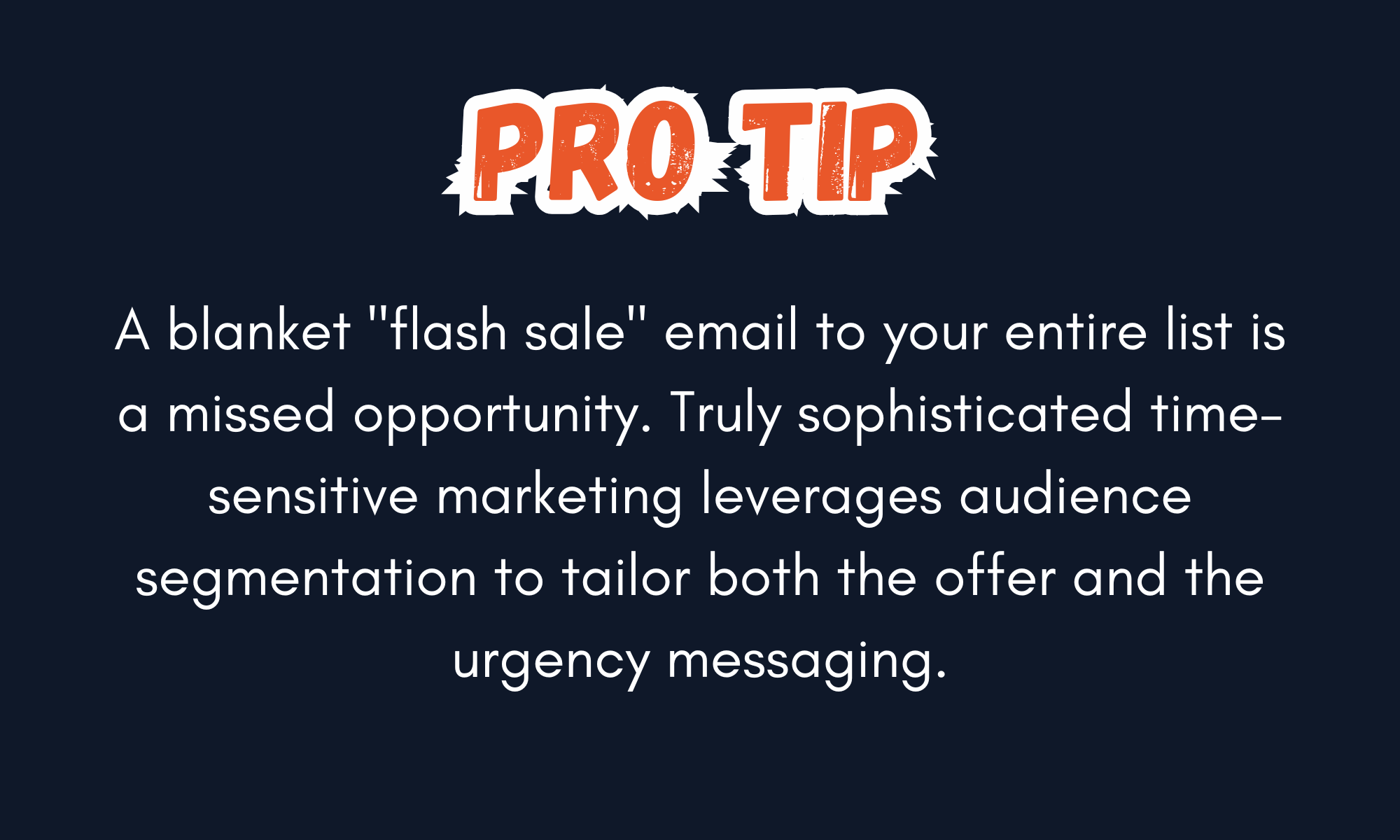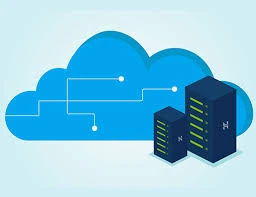Time-Sensitive Offers - Boost Conversions & Sales

In 2025's fiercely competitive digital marketplace, simply getting your brand noticed is a Herculean task. However, persuading a consumer to take immediate, decisive action proves an even greater challenge. With endless choices and dwindling attention spans, marketing messages often become background noise, leading to decision paralysis and abandoned carts. This is where the strategic deployment of time-sensitive offers becomes not just advantageous, but absolutely crucial.
Time-sensitive offers are precisely what their name suggests: promotions, discounts, or unique opportunities available only for a strictly limited duration or in finite quantities. They are powerful tools that leverage innate psychological triggers to cut through the digital clutter, compel immediate engagement, and transform hesitant browsers into decisive buyers. Unlike evergreen promotions, these offers introduce an element of urgency, creating a compelling reason for customers to act now, rather than later.
In a landscape dominated by instant gratification and constant novelty, the ability to create genuine, ethical urgency can dramatically boost conversion rates, accelerate sales cycles, and significantly enhance overall marketing ROI. This comprehensive guide will delve into the profound psychology underpinning time-sensitive offers, explore the various types you can deploy, provide actionable strategies for crafting and implementing them across diverse channels, detail how to measure their impact, and, crucially, navigate the vital ethical considerations that underpin their responsible use.
The Psychology of Urgency & Scarcity
The remarkable effectiveness of time-sensitive offers isn't magic; it's grounded in fundamental principles of human psychology. By understanding these drivers, marketers can craft offers that genuinely resonate and compel action.
Central to this effectiveness is Loss Aversion, a cognitive bias popularised by Nobel laureates Daniel Kahneman and Amos Tversky. Research consistently shows that humans are more powerfully motivated by the fear of losing something they could have had than by the prospect of gaining something of equal value. When a time-sensitive offer is presented, the potential customer isn't just seeing a discount; they're facing the imminent loss of that discount or unique opportunity if they don't act quickly. This primal fear of missing out acts as a potent motivator.
Closely related is FOMO (Fear Of Missing Out). In an increasingly interconnected world, exacerbated by social media's pervasive influence, FOMO has become a widespread social anxiety. The constant stream of updates showing what others are doing, buying, or experiencing amplifies the worry that a desirable experience or opportunity is being enjoyed by others, or is slipping away. Time-sensitive offers directly tap into this by creating a scenario where others are benefiting, and the window of opportunity is closing. Platforms like Instagram and TikTok, with their ephemeral content and constant showcasing of trends, are perfect breeding grounds for FOMO.
The Scarcity Principle dictates that items or opportunities become significantly more attractive when they are perceived as rare, unique, or limited in supply. When something is scarce, it signals higher value, exclusivity, and desirability. This can be quantity-based ("Only 5 left in stock!") or time-based ("Offer ends in 3 hours!"), creating a powerful psychological pull. Luxury brands have long leveraged this with limited edition products, but digital marketing has democratised its application.
Urgency, specifically, is the time-based application of the scarcity principle. Countdown timers, "flash sale" announcements, and "ends soon" messaging all cultivate a sense of immediacy, compelling a rapid decision. This isn't just about forcing a sale; it's about helping combat decision fatigue. In an era of overwhelming choice, many consumers delay purchases. By presenting a limited window, time-sensitive offers can reduce analysis paralysis and guide the customer towards a timely choice.
Finally, Herd Mentality and Social Proof amplify the effect. When customers see indicators that others are actively engaging with a time-sensitive offer ("20 people just bought this!", "Sale ending – our bestsellers are flying out!"), it validates the opportunity. This creates a psychological pull to join the perceived crowd, reinforcing the urgency through collective action.

Types of Time-Sensitive Offers
The versatility of time-sensitive offers allows them to be adapted to almost any business model, product, or service. Understanding the various types is key to deploying them effectively:
- Flash Sales: These are characterised by deep discounts offered for very short durations, typically 24 to 48 hours. They are excellent for generating immediate sales volume, clearing excess inventory, or creating a buzz around a specific product. Examples include Amazon's 'Lightning Deals' or 'Deal of the Day' promotions.
- Daily Deals / Deal of the Day: Similar to flash sales but often featuring a single product or service at a discounted price for a specific day. These are effective for building habits, encouraging daily website visits, and highlighting specific inventory.
- Limited-Time Discounts / Promotions: Broader sales events with a clear start and end date, often tied to seasonal pushes or specific campaigns (e.g., "End of Financial Year Sale," "Bank Holiday Weekend Special"). These are ideal for promoting entire categories or a wider range of products.
- Limited Stock / Quantity Offers: These offers explicitly state a finite number of units available. This is particularly effective for high-demand products, exclusive editions, or to create excitement around a pre-order campaign. You'll often see "Only 5 left!" or "Limited edition – while stocks last."
- First-X-Customers Promotions: A unique incentive (discount, bonus product, or exclusive access) offered only to the first specified number of buyers. This is excellent for new product launches, building initial momentum, or rewarding early adopters.
- Early Bird Pricing: A common tactic for events, courses, or software subscriptions, where a discounted price is offered for purchasing before a set date. This encourages early commitment and helps gauge initial interest. Examples include conference tickets or online course enrolments.
- Expiring Free Trials / Demos: For SaaS platforms or subscription services, offering a time-limited free trial or demo encourages immediate engagement and evaluation, with the expiry date acting as the prompt to convert to a paid plan.
- Bundles / Bonuses with Expiry: A time-sensitive offer can also involve extra items, services, or upgrades included as a bonus, but only if purchased within a specific window. This is effective for increasing average order value (AOV) and boosting the perceived value of the core offering.
- Seasonal / Event-Based Offers: These are tied to specific holidays, shopping events (e.g., Black Friday, Cyber Monday), or cultural moments (e.g., Christmas, Mother's Day). The inherent urgency of the event drives the time-sensitive nature of the promotion. Retail and gifting sectors leverage these extensively.
Crafting Effective Time-Sensitive Offers
The success of a time-sensitive offer lies not just in its existence, but in its meticulous crafting and presentation.
- Clear Value Proposition: The customer must instantly understand "what's in it for me?" The offer must clearly communicate the benefit: "Save 30% on all electronics," "Get a free accessory with your new laptop," "Unlock exclusive access." Ambiguity kills urgency.
- Compelling Call-to-Action (CTA): Your CTA needs to be action-oriented and carry urgency. Beyond "Shop Now," consider phrases like "Claim Your Discount Before It's Gone," "Buy Before Midnight," "Secure Your Spot," or "Don't Miss Out!"
- Visibility of Urgency: The time constraint must be prominently displayed. This means using countdown timers (on websites and in emails), clearly visible "limited stock" indicators on product pages, or bold expiry dates in banners and ad copy. Visual cues are often more effective than text alone.
- Simplicity and Clarity: Offers should be straightforward and easy to understand. Avoid overly complex terms, hidden conditions, or convoluted redemption processes. Any friction in understanding or claiming the offer will negate the urgency.
- Audience Segmentation: A generic "flash sale" might work, but targeted offers are far more powerful. Segment your audience based on past behaviour, preferences, or even real-time cart contents. For instance, a cart abandonment email could offer a specific time-limited discount on the items they almost purchased, or a loyalty program member could receive an exclusive early access offer.
- Channel Alignment: Ensure the offer's format and message are appropriate for the channel. A concise SMS might work for a "last chance" alert, while a visually rich email or social media ad is better for showcasing a new product bundle.
- Post-Expiry Strategy: Plan what happens when the offer ends. Does the price revert to normal? Does the product disappear from the site? Or do you follow up with a softer message, perhaps a survey, to capture insights from those who didn't convert? Consistency here builds trust; constantly extending "limited time" offers can erode credibility.
.png)
Implementing Time-Sensitive Offers Across Channels
Effective time-sensitive marketing thrives on strategic distribution. Deploying offers across multiple channels, with careful consideration for each platform's nuances, maximises reach and impact.
Website (The Core Touchpoint):
- Homepage Banners: Prominently display site-wide time-sensitive offers on your homepage to immediately grab attention upon arrival.
- Product Pages: Integrate urgency directly on product pages. This could be a small countdown timer next to the price, a "limited stock" notification (e.g., "Only 3 left!"), or subtle real-time purchase notifications ("Sarah from Manchester just bought this!").
- Cart/Checkout Pages: Implement last-minute, low-friction urgent offers, such as a time-limited free upgrade on shipping if they complete their order within a certain number of minutes.
- Pop-ups: Use exit-intent pop-ups (triggered when a user is about to leave the site) or time-based pop-ups (after a user has spent a certain amount of time browsing) to present an urgent offer that encourages them to stay or convert.
Email Marketing:
Email is perhaps the most potent channel for direct, segmented, time-sensitive campaigns.
- Subject Lines: Crucial for open rates. Use phrases like "Flash Sale Ends Tonight!", "Your Exclusive Offer Expires in 24 Hours!", or "Don't Miss Out: Last Chance to Save!"
- Dedicated Campaigns: Plan multi-email sequences: an announcement email, a reminder email (e.g., 24 hours before expiry), and a "last chance" email (e.g., 3 hours before expiry).
- Personalisation: Segment your email lists to tailor offers based on past browsing history, previous purchases, or demographic data, making the urgency more relevant.
Social Media:
Social platforms are inherently designed for immediacy and are perfect for amplifying urgency.
- Stories/Reels: Their short-lived nature makes them ideal for promoting flash sales or very short-term discounts.
- Countdown Stickers: Instagram Stories offer interactive countdown stickers that users can tap to set reminders, building anticipation.
- Paid Social Ads: Utilise highly targeted paid social campaigns with urgent ad copy and compelling creatives that showcase the time-sensitive offer.
- Live Streams: Announce exclusive, time-limited offers or bonuses during live video broadcasts to reward real-time engagement.
.png)
SMS & Push Notifications:
These channels offer direct, immediate delivery, ideal for "last chance" alerts to opted-in users.
- SMS: Keep messages concise and action-oriented ("Flash Sale: 20% off all shoes. Ends Midnight! [Link]").
- Push Notifications: For app users or those with web push enabled, these can deliver alerts about abandoned carts, new short-term offers, or expiring discounts.
Paid Search (PPC):
Google Ads and other PPC platforms offer tools to incorporate urgency directly into your ads.
- Ad Customisers: Use countdown customisers in text ads to dynamically display the time remaining until an offer expires.
- Promotion Extensions: Highlight current sales, discounts, or special offers directly in your search results.
App Marketing:
For businesses with dedicated mobile apps, leverage in-app notifications or present app-only, limited offers to incentivise engagement and purchases.
Measuring & Optimising Time-Sensitive Offers
To ensure your time-sensitive offers are effective and profitable, robust measurement and continuous optimisation are non-negotiable.
Key Performance Indicators (KPIs):
- Conversion Rate: This is paramount. Compare the conversion rate during the offer period to your baseline conversion rate for similar products/services.
- Sales Volume/Revenue: Track the total sales or revenue generated specifically during the offer's active period.
- Average Order Value (AOV): Did the time-sensitive offer encourage customers to spend more (e.g., by hitting a threshold for free shipping, or choosing a higher-value bundle)?
- Click-Through Rate (CTR): Compare the CTR of your urgent messaging (e.g., email subject lines, ad copy) against your regular, non-urgent communications.
- Engagement Metrics: For email, monitor open rates. For social media, track shares, likes, and comments. This indicates how well the urgency resonated.
- Traffic Spikes: Did the offer drive a significant increase in website traffic during the promotional window?
A/B Testing Elements:
Never assume; always test. Experiment with different variables to refine your approach:
- Offer Percentage/Value: Is 20% off more effective than £10 off?
- Duration of the Offer: Does a 24-hour flash sale outperform a 48-hour one?
- Wording/Messaging: Test different phrases like "Ends Soon!" vs. "Limited Time Only!"
- Placement: Compare the effectiveness of a pop-up versus a top banner on your website.
- Visual Cues: Does a dynamic countdown timer outperform static text stating the end date?
- Call-to-Action: "Shop Now" vs. "Claim Your Deal."
Post-Campaign Analysis:
Beyond the immediate results, conduct a deeper analysis:
- What happened to sales after the offer ended? Was there a significant drop-off, indicating customers were pulled forward rather than genuinely new conversions?
- Did the offer attract new customers, or did it primarily incentivise existing ones?
- How did these customers behave in the long term? Did those acquired or reactivated via time-sensitive offers have a comparable Customer Lifetime Value (CLV) to your regular customers? This helps determine the true profitability.
Ethical Considerations & Avoiding Pitfalls
The power of time-sensitive offers comes with a significant responsibility. Misuse can rapidly erode customer trust and damage your brand.
- Authenticity is Paramount: Never, ever create fake scarcity or urgency. If your website says "Only 1 left!" but you have hundreds in stock, or "Sale ends tonight!" but it's extended indefinitely, consumers will quickly catch on. This deceit destroys trust and can lead to severe reputational damage. The Advertising Standards Authority (ASA) in the UK actively monitors and penalises misleading claims.
- Transparency: Clearly state all terms and conditions of the offer. No hidden clauses, no surprise exclusions. The customer should understand exactly what they're getting and under what conditions.
- Over-use/Fatigue: Bombarding your audience with constant "urgent" offers will desensitise them. They'll learn that your urgency isn't real, leading to offer blindness. Balance urgent campaigns with other types of value-driven communication.
- Regulatory Compliance: Always adhere to local advertising standards and consumer protection laws (e.g., those from the ASA in the UK). These bodies have strict rules about the honesty of pricing, discounts, and availability claims.
- Customer Experience: The process of claiming the offer must be seamless. Any technical glitches or confusing steps will turn urgency into frustration.
- Brand Alignment: Consider if aggressive urgency fits your brand's overall personality. A luxury brand might use subtle scarcity (e.g., limited editions) rather than overt countdown timers, which might feel more appropriate for a discount retailer.
.png)
Future Trends in Time-Sensitive Marketing
The future of time-sensitive marketing is set to become even more sophisticated, driven by advancements in data and AI.
- Hyper-Personalisation via AI: Artificial intelligence will increasingly allow marketers to identify the optimal moment for individual users to receive a time-sensitive offer. Based on real-time browsing behaviour, purchase history, and even predictive analytics of churn risk, AI can dynamically trigger offers that are highly relevant and perfectly timed for maximum impact.
- Dynamic Pricing & Offers: Beyond static discounts, expect to see real-time adjustments of offer value, duration, or scarcity based on live demand, current inventory levels, and specific user segments. This creates truly adaptive and optimised campaigns.
- Conversational Commerce Integration: As chatbots and voice assistants become more prevalent, time-sensitive offers will be integrated into natural dialogues. A customer asking a chatbot about a product might receive a contextually relevant, time-limited offer directly within the conversation flow.
- Gamification: Incorporating game-like elements (e.g., "Spin the Wheel for a limited-time discount," "Unlock this offer in X minutes!") will continue to make time-sensitive offers more engaging and interactive, tapping into intrinsic motivators beyond just savings.
- Blockchain for Transparency: While still nascent, blockchain technology could potentially be used to verify the absolute authenticity of "truly limited edition" items or unique digital assets, providing an irrefutable record of scarcity.
Conclusion: Leveraging Urgency for Sustainable Growth
In a marketing landscape defined by relentless competition and fleeting attention, time-sensitive offers stand out as a uniquely powerful tool for galvanising action. By expertly leveraging the psychology of urgency and scarcity, brands can compel consumers to move beyond passive browsing and make decisive purchases.
The key to mastering time-sensitive offers lies in a delicate balance: combining deep psychological understanding with precise strategic implementation and, crucially, unwavering ethical responsibility. When executed responsibly, time-sensitive offers do more than just create fleeting sales; they can accelerate sales cycles, boost average order values, and, when aligned with genuine value, even build valuable long-term customer relationships. They transform the casual act of browsing into a compelling opportunity, converting hesitation into happy customers and propelling sustainable business growth.
References:
https://blueskyifas.co.uk/remembering-daniel-kahneman-and-his-loss-aversion-theory/
https://www.indeed.com/career-advice/career-development/scarcity-principle
https://www.investopedia.com/terms/l/loss-psychology.asp
https://mailchimp.com/resources/ephemeral-content/
https://www.optimizely.com/optimization-glossary/decision-fatigue/
https://www.verywellmind.com/how-herd-mentality-explains-our-behavior-7487018
.avif)



.webp)




